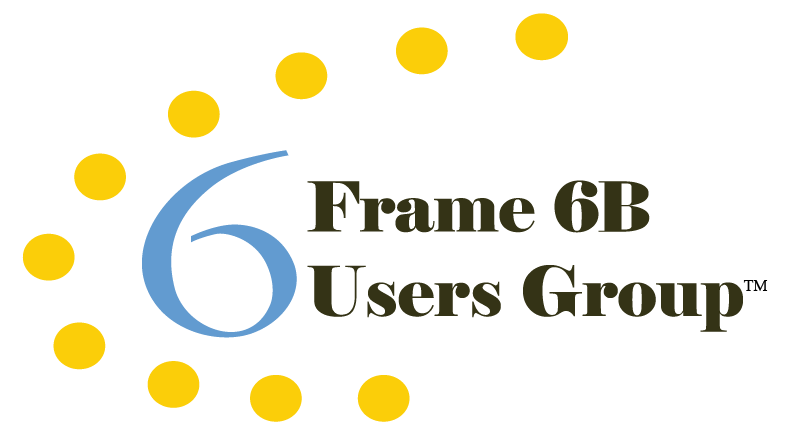Background: Legacy Turbine Users Group
The Legacy Turbine Users Group (LTUG), formed by Power Users earlier this year to facilitate the transfer of knowledge among members of the Frame 5, 6B, and 7EA Users Groups, greatly benefits owner/operators of these engines. With the number of experienced O&M personnel in decline because of staff reductions and retirements, it makes good sense to aggregate the talent on both the user and supplier sides for all to share—especially given that these GE engines have “common” elements.
LTUG’s first annual meeting was conducted as part of Power User’s Mega Event, Aug 29 – Sept 1, 2022, at the San Antonio Marriott Rivercenter, which attracted more than 350 owner/operators. Several reports on that conference are forthcoming. Here the editors review the backgrounds of the Frame 5 and Frame 6B organizations and salute BASF Geismar for its work in increasing the reliability of boiler drum-level controls. The 7EA Users Group, serving owner/operators of 7B-EA gas turbines, will be featured in the next issue of CCJ ONsite and include recent best practices from that fleet.
The 6B is a familiar GE gas turbine in cogeneration systems at process plants where staff typically is challenged to keep legacy assets operating on a low O&M budget, often without the support of a corporate engineering staff. The presentations and discussions at annual meetings of this users group provide know-how and proven solutions to help owner/operators achieve that goal.
These engines also are found in simple- and combined-cycle arrangements for electricity production only. In fact, the first Frame 6 (Model A, which preceded the 6B) was commissioned July 15, 1979 at Montana Dakota Utilities Co’s Glendive Power Plant. The 41-MW, dual-fuel-capable, simple-cycle unit was still in service about a year ago.
2021 conference in review. No formal user presentations were on the 2021 virtual conference agenda. Rather, owner/operators shared their experiences via four roundtable discussion forums: compressor, I&C, combustion, and turbine, each chaired by a member of the steering committee. Copies of the slide decks and an unedited recording of each discussion are available to registered users in the Frame 6B section of the Power Users website. Click on the “Conference Archives” tab. These are valuable training aids for O&M personnel, both experienced hands who might benefit from a refresher as well as newcomers.
| Steering committee, 2022
Michael Adix, Motiva Enterprises Steering committee advisers: Jeff Gillis, ExxonMobil retired |
Highlights of the compressor roundtable include the value of hydrophobic HEPA filters to engine performance, the need know the nature of blade deposits and before you water-wash to avoid pitting corrosion, and when to/when not to fog.
A highlight of the I&C presentation was what to know before you consider upgrading from a Mark IV to Mark VIe control system. It’s a big undertaking, despite what you may have heard to the contrary. Space constraints may be a challenge difficult to overcome.
Support documentation focusing on O&M safety available from the OEM is highlighted in the sidebar.
Two vendor presentations also are available on the Power Users website in the Frame 6B section, both concerning generators:
- “Generator cycling concerns,” W Howard Moudy, National Electric Coil. Presentation’s primary intent is to develop awareness of cycling-related concerns and affected components. It covers speed cycling, which involves taking the unit from standstill or turning-gear speed to full speed and back (one speed cycle), and load cycling, the fluctuating generator output required to follow demand. Also covered are the opportunities for monitoring, maintaining, and solving problems.
- “When a robot won’t fit,” Jamie Clark, AGT Services Inc. Focus is on generator minor inspection techniques and their limitations.
The third leg of the Frame 6B conference stool, conducted by the OEM on the second day of the meeting, consisted of four sessions, each running about 30 minutes. The subjects: Covid experience, condition-based parts management, decarbonization, and compressor and hot-gas-path Q&A.
To dig deeper, access the presentations on the GE Power Customer Portal (formerly MyDashboard). The new user interface features enhanced navigation to keep users informed on the disposition of TILs, provide the ability to follow your outage from planning to closeout, track parts orders, and retain reports and other documentation of importance—such as O&M manuals—in one location. Register for access at https://Registration.gepower.com/registration. To log in, go to https://mydashboard.gepower.com/dashboard.
Safety TILs affecting 6B gas turbines
TIL-2101, Modification of manual lever hoist for safe rotor removal.
2044, Dry flame sensor false flame indication while turbine is offline.
2028, Control settings for GE Reuter Stokes flame sensors.
2025, GE Reuter Stokes FTD325 dry flame sensors, false flame indication.
1986, Braid-lined flexible metal-hose failures.
1918, 6B Riverhawk load-coupling hardware and tooling safety concern.
1838, Environmentally induced catalytic-bead gas-leak sensor degradation.
1793, Arsenic and heavy-metal material handling guidelines.
1713, 6B, 6FA, 6FA+E, and 9E false-start drain system recommendations.
1709, 6B load-coupling recommendations.
1707, Outer-crossfire-tube packing-ring upgrade.
1700, Potential gas-leak hazard during offline water washes.
1633, Load-coupling pressure during disassembly.
1628, E- and B-class gas-turbine shell inspection.
1612, Temperature degradation of turbine-compartment light fixtures.
1585-R1, Proper use and care of flexible metal hoses.
1577, Precautions for air-inlet filter-house ladder hatches.
1576-R1, Gas-turbine rotor inspections.
1574, 6B standard combustion fuel-nozzle body cracking.
1573, Fire-protection-system wiring verification.
1566-R2, Hazardous-gas detection system recommendations.
1565, Safety precautions to follow while working on VGVs.
1557, Temperature-regulation valves containing methylene chloride.
1556, Security measures against logic forcing.
1554, Signage requirements for enclosures protected by CO2 fire protection.
1537-1, High gas flow at startup—Lratiohy logic sequence.
1522-R1, Fire-protection-system upgrades for select gas turbines.
1520-1, High hydrogen purge recommendations.
1429-R1, Accessory and fuel-gas-module compression-fitting oil leaks.
1368-2, Recommended fire-prevention measures for air-inlet filter houses.
1275-1R2, Excessive fuel flow at startup.
1159-2, Precautions for working in or near the turbine compartment or fuel handling system of an operating gas turbine.






